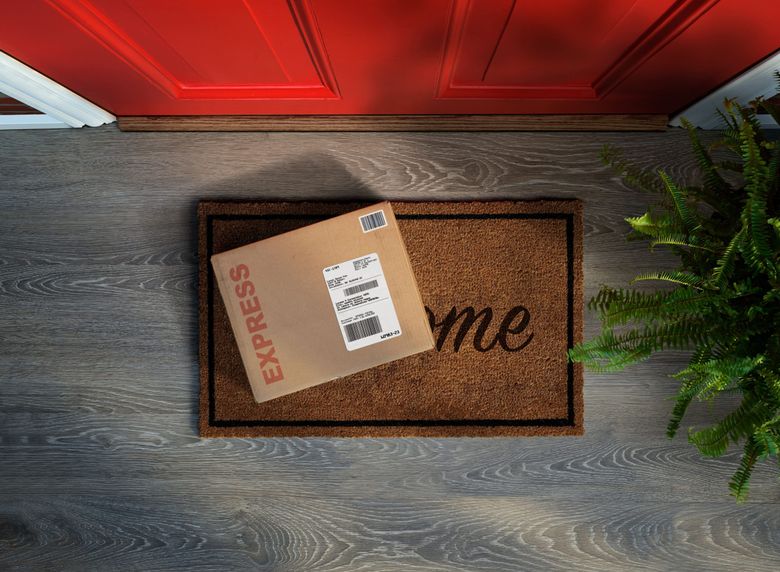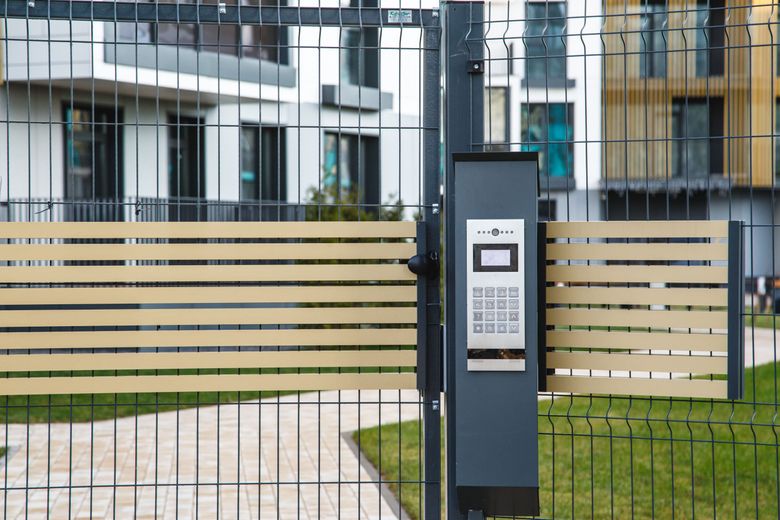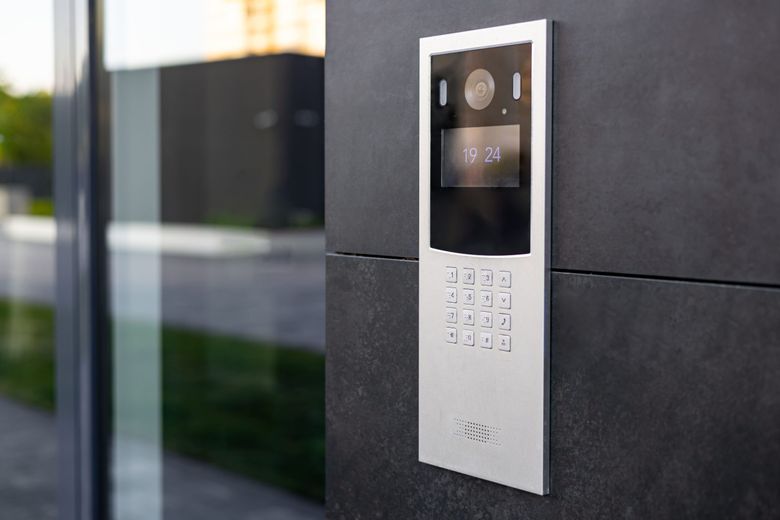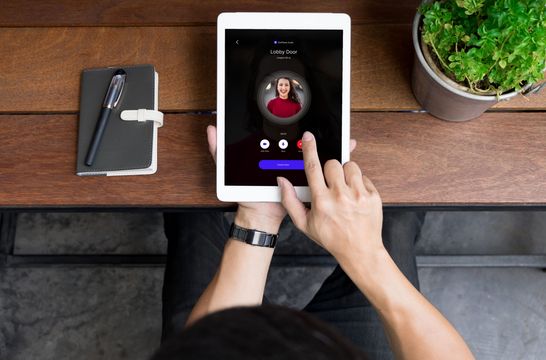In the age of e-commerce and doorstep deliveries, there’s a modern menace that’s stealthily crept into our lives – package theft. Picture this: you eagerly anticipate the arrival of a long-awaited package, only to discover it has mysteriously vanished from your porch. It’s a frustrating and disheartening experience, one that has become increasingly common in recent years. In this era of convenience and online shopping, package theft is on the rise, and the statistics are alarming.
According to a survey conducted by Security.org in 2022, nationally, 49 million Americans have had at least one package stolen in the past 12 months. This study involved more than 18,000 adults, spanning across more than 50 states. Their goal was to paint a complete picture of porch piracy’s regional impacts based on firsthand experiences rather than relying on generic crime rate projections or Google search trends.
But fear not, for there is a silver lining to this cloud of concern – the world of home security upgrades. In this blog, we’ll delve into the growing problem of package theft, its profound impact on homeowners and communities, and the crucial role that home security upgrades play in safeguarding your precious deliveries.
Join us on this journey as we explore the significance of deterrence, the peace of mind that comes with a well-protected home, and the ultimate purpose of this article: to provide you with comprehensive guidance on preventing package theft and to shed light on the diverse array of home security upgrades at your disposal. Your parcels deserve to reach you safely, and your home deserves the peace it was built to provide.
Key Takeaways
- Turn the tables on porch pirates with a creative twist on package protection. Consider setting up a “bait-and-trap” parcel – a decoy package rigged with surprises like glitter bombs or harmless smoke. Not only does this provide a bit of karmic justice, but it’s also an entertaining way to discourage thieves and make viral-worthy content for social media.
- Enter the era of package theft prevention with cutting-edge smart technology. Explore the world of AI-powered security cameras, doorbell cameras, and smart locks. These devices not only help you keep an eye on your packages but also allow you to remotely grant access to delivery personnel, ensuring your deliveries stay safe and secure.
- Strengthen the bonds in your neighborhood by creating a community watch network. Establishing a shared responsibility for package safety can significantly reduce theft. Consider organizing regular meetings or creating a digital group where neighbors can collaborate, share security tips, and watch out for each other’s packages. This sense of community can act as a powerful deterrent to potential thieves and make your neighborhood a safer place for all.
Suggested Posts
- How To Prevent Package Theft At Your Apartment Building?
- Choosing The Best Access Door Controller System In 2023
- How To Set Up A Package Room In 2023?
Understanding Package Theft
Package theft and other would-be porch pirates have become a growing concern for both residents and property managers in apartment buildings, thanks to the ever-increasing popularity of e-commerce.
According to a survey conducted by C+R Research in 2022, almost 1 in 7 (14%) Americans have fallen victim to these would-be porch pirates – some more than once. Most (67%) have had one package stolen, 22% have had two, and 11% have had three or more stolen packages.
To address this problem comprehensively, it is essential to delve into the types of package theft, the motivations behind it, and how we can profile potential package thieves.
Types of Package Theft
Porch Piracy
Porch piracy is the most common form of package theft. It occurs when thieves steal packages that have been delivered to the recipient’s doorstep or porch. These thefts often happen during daylight hours when homeowners are at work or otherwise absent from their homes. Porch pirates typically target packages left in plain sight, making it a crime of opportunity.
In-Transit Theft
In-transit theft involves stealing packages while they are being transported by delivery services. This can occur when a delivery truck is left unattended, during a temporary stop, or even by insiders within the delivery company. In-transit thefts are more organized and planned compared to porch piracy and may involve multiple individuals.
Insider Theft
Insider theft refers to package theft committed by individuals who have access to the delivery process, such as postal workers or package handlers. These thieves take advantage of their positions to intercept and steal packages before they reach their intended recipients. Insider theft can be challenging to detect as the perpetrators often have inside knowledge of delivery procedures.
Motivations behind Package Theft
Financial Gain
The primary motivation for package theft is financial gain. Thieves steal packages with the intent to sell the stolen items or use them personally. Stolen goods can include electronics, clothing, jewelry, or any valuable items that are easily resellable. The rise of online marketplaces has made it easier for thieves to sell stolen merchandise discreetly.
Opportunity-Driven Theft
Many package thefts are opportunistic in nature. Thieves often strike when they see an unattended package on a doorstep or when a delivery truck is momentarily left unattended. The ease of access and low risk of getting caught motivate individuals to commit these crimes without much premeditation.
Impact on the Community
Some package thieves are motivated by a desire to disrupt and destabilize their communities. These individuals may derive satisfaction from causing inconvenience and frustration among their neighbors or may hold grievances against specific individuals. Such motivations are less common but can have a significant impact on the community’s sense of security.
Profiling Package Thieves
Common Characteristics
While it’s challenging to create a definitive profile of a package thief due to the diversity of individuals involved, there are some common characteristics to consider:
- Age: Package thieves can range from juveniles to adults, with a significant portion falling within the 18-35 age group.
- Gender: There is no specific gender bias; both males and females engage in package theft.
- Local Knowledge: Many package thieves are familiar with the neighborhoods they target, which helps them identify potential targets and escape routes.
- Vehicle Usage: Some thieves use vehicles to quickly transport stolen packages, making them easier to identify through security camera footage.
Identifying Suspicious Behavior
Recognizing suspicious behavior can help homeowners and law enforcement deter package theft:
- Loitering: Individuals lingering around your property or a delivery truck without a valid reason may be suspicious.
- Multiple Visits: Frequent visits to your neighborhood by unfamiliar individuals can indicate potential criminal activity.
- Unmarked Vehicles: Be cautious of unmarked or unusual vehicles parked near your property during delivery times.
- Unusual Clothing: Look for individuals dressed inappropriately for the weather or wearing clothing that conceals their identity, such as hoodies or masks.
- Odd Hours: Be wary of package deliveries or pickups during odd hours, especially late at night.
Assessing Your Current Security
Assessing your current security is a critical step in safeguarding your assets and ensuring the protection of sensitive information. This process involves evaluating your existing security measures, identifying potential vulnerabilities, and gauging the overall effectiveness of your security posture.
Home Security Audit
Identifying Vulnerabilities
Assessing the security of your home is essential to protect your property and loved ones. Conducting a thorough home security audit involves identifying vulnerabilities in your current security setup. Here’s how to do it:
a. Exterior Vulnerabilities:
- Start by examining the exterior of your home. Look for weak points such as damaged doors, windows, or loose locks. Ensure that all entry points are secure, and consider reinforcing them if necessary.
- Check for gaps in fencing or gates that might allow unauthorized access to your property.
- Inspect the landscaping to ensure there are no hiding spots for potential intruders, such as dense shrubbery or overgrown trees near windows.
- Look for signs of forced entry, like broken glass or damaged door frames, that may indicate previous security breaches.
b. Interior Vulnerabilities:
- Inspect the interior of your home, paying attention to doors and windows that may not close or lock properly.
- Consider the location of valuable items, and make sure they are not easily visible from outside.
- Check the condition of your alarm system, if you have one, to ensure it is functioning correctly.
- Evaluate the strength and quality of existing locks on doors and windows, and upgrade them if necessary.
c. Alarm System and Sensors:
- Test your existing alarm system and sensors to make sure they are in working order. Replace batteries as needed.
- Ensure that your alarm system is monitored, either by a professional security company or through a self-monitoring option.
- Verify that the alarm is loud enough to alert you and your neighbors in case of an intrusion.
Analyzing Previous Incidents, If Any
Review any past security incidents or break-ins that may have occurred in your home or neighborhood. Understanding the patterns and methods used by intruders in the past can help you identify potential weaknesses in your security measures. Consult with local law enforcement for any relevant crime data or advice on improving security.
Surveillance Systems
Types of Security Cameras
Selecting the right surveillance cameras is crucial for effective security monitoring. There are several types to consider:
a. Outdoor Cameras:
- Bullet Cameras: These are sleek, cylindrical cameras that are weatherproof and ideal for outdoor use. They are typically mounted on walls or ceilings and offer a fixed view.
- Dome Cameras: Dome-shaped cameras are more discreet and offer a 360-degree view. They are commonly used for both indoor and outdoor surveillance.
- PTZ (Pan-Tilt-Zoom) Cameras: These cameras can be remotely controlled to pan, tilt, and zoom, providing flexible coverage and tracking capabilities.
- Wireless Cameras: These cameras connect to your network wirelessly, reducing the need for extensive cabling.
b. Indoor Cameras:
- Cube Cameras: Small and inconspicuous, these cameras are suitable for indoor surveillance. Some come with two-way audio for communication.
- Hidden Cameras: These cameras are disguised as everyday objects like smoke detectors or wall clocks, making them discreet for covert surveillance.
c. IP vs. Analog Cameras:
- IP cameras offer higher resolution, remote access, and advanced features like motion detection and facial recognition. They require an internet connection.
- Analog cameras are traditional CCTV cameras that transmit signals over coaxial cables and are limited in features compared to IP cameras.
Evaluating Camera Placement
Proper camera placement is essential for maximizing surveillance coverage. Consider these factors:
- Entry Points: Install cameras near entryways, such as front and back doors, garage doors, and windows, to capture potential intruders.
- High-Traffic Areas: Position cameras in areas with high foot traffic, both indoors and outdoors.
- Blind Spots: Identify blind spots and areas with poor lighting, and place cameras strategically to cover these areas.
- Height and Angles: Mount cameras at an appropriate height and angle to capture faces and other identifying features.
Access Control
Door and Window Locks
- Deadbolt Locks: Install high-quality deadbolt locks on exterior doors. Choose locks with at least a one-inch throw bolt for added security.
- Reinforcement Plates: Strengthen door frames with reinforcement plates to prevent forced entry through door kick-ins.
- Window Locks: Use window locks on all windows, including sliding and casement windows, to prevent unauthorized access.
Smart Locks and Keyless Entry
- Smart Locks: Consider upgrading to smart locks that can be controlled remotely via a smartphone app. Some smart locks also offer keyless entry options, allowing you to grant access codes to trusted individuals.
- Keypad Entry: Install keypad locks for added convenience and security. These locks allow you to create unique entry codes for family members and service providers.
Outdoor Lighting
Importance of Well-Lit Areas
Outdoor lighting serves as a deterrent to potential intruders and enhances overall safety. Here’s why it’s essential:
- Deterrence: Well-lit exteriors discourage burglars from attempting break-ins, as they are less likely to go unnoticed.
- Visibility: Adequate lighting helps residents and security cameras capture clear images and footage.
- Safety: Properly lit pathways, stairs, and entrances prevent accidents and make your property safer for occupants and visitors.
Types of Outdoor Lighting
- Motion-Activated Lights: These lights turn on when motion is detected, alerting you to potential intruders and conserving energy when not needed.
- Floodlights: Powerful floodlights provide extensive illumination and can be strategically placed around your property.
- Pathway Lights: Low-level pathway lighting enhances safety and aesthetics along walkways and driveways.
- Timers and Smart Lighting: Set timers or use smart lighting systems to automate outdoor lighting, creating the appearance of an occupied home when you’re away.
Home Security Upgrades
Advanced Surveillance Systems
High-resolution cameras
- High-resolution cameras are a fundamental component of an advanced surveillance system.
- These cameras capture clear and detailed images and videos, allowing homeowners to identify potential threats or incidents accurately.
- The resolution is measured in pixels, and higher resolutions, such as 1080p or 4K, provide more clarity.
- A greater number of pixels means finer details, making it easier to recognize faces or license plates.
Motion-activated and continuous recording
- Motion-activated recording is a critical feature that helps conserve storage space and ensures that your surveillance system captures relevant events.
- Cameras equipped with motion sensors only record when motion is detected, reducing the amount of unnecessary footage.
- Continuous recording, on the other hand, records 24/7, providing a comprehensive record of all activity around your property.
- Combining both options can offer the best of both worlds—motion-triggered recording for efficiency and continuous recording for complete coverage.
Cloud storage options
- Cloud storage is a convenient and secure way to store surveillance footage.
- It eliminates the risk of physical damage to recording devices and allows homeowners to access their footage remotely.
- Cloud storage options vary, with some offering free storage for a limited period and others requiring a subscription.
- It’s essential to choose a service that meets your storage needs and offers encryption and data protection.
Smart Security Technology
Video doorbells
- Video doorbells have become increasingly popular for enhancing home security.
- They typically include a high-resolution camera, microphone, and speaker, enabling you to see, hear, and communicate with visitors at your door remotely.
- These devices often feature motion detection, alerting you when someone approaches your doorstep, even if they don’t ring the doorbell.
- Some models can also capture footage of package thefts and other suspicious activities.
Home automation and remote monitoring
- Smart security technology extends beyond cameras and doorbells to encompass the entire home.
- With home automation, you can control locks, lights, thermostats, and more remotely using your smartphone or voice commands.
- Remote monitoring allows you to keep an eye on your property from anywhere, providing peace of mind while you’re away.
- You can receive real-time alerts and access live video feeds, making it easier to respond to security threats promptly.
Secure Package Delivery Solutions
Secure lockboxes
- Secure lock boxes or package lockers are designed to prevent package theft.
- They provide a secure place for delivery personnel to leave packages, protecting them from theft or damage.
- Some lockboxes are equipped with electronic locks that can be controlled remotely, allowing you to grant temporary access to delivery drivers and lock the box afterward.
Delivery apps and services
- Various delivery apps and services offer secure package delivery options.
- Amazon, for example, has Amazon Key, which allows delivery personnel to access your home or garage to drop off packages securely.
- These services often use smart locks and cameras to monitor deliveries and ensure security.
- They provide real-time notifications and video recordings of the delivery process.
Neighborhood Watch Programs
Collaborative community efforts
- Neighborhood Watch programs involve residents working together to enhance the safety and security of their community.
- Members keep an eye out for suspicious activity and share information with local law enforcement.
- These programs foster a sense of community and solidarity, making neighborhoods less attractive to criminals.
- Regular meetings and communication among members help build trust and increase vigilance.
Communication platforms
- Neighborhood Watch groups often utilize communication platforms such as social media, messaging apps, or dedicated websites to share information and updates.
- These platforms allow for quick dissemination of alerts, descriptions of suspicious individuals or vehicles, and updates on local incidents.
- They also promote community engagement and interaction.
Alarm Systems
Types of alarm systems
- Alarm systems are a fundamental part of home security. There are two main types: burglar alarms and fire alarms.
- Burglar alarms detect unauthorized entry or intrusion and often include sensors on doors and windows, motion detectors, and control panels.
- Fire alarms detect smoke or heat, providing early warnings of a potential fire. They may also be integrated with sprinkler systems.
Professional monitoring vs. self-monitoring
- Alarm systems can be either professionally monitored or self-monitored.
- Professional monitoring involves a third-party monitoring company that receives alerts from your alarm system and contacts the appropriate authorities in case of an emergency.
- Self-monitoring means that you receive alerts directly on your smartphone or other devices. You are responsible for contacting emergency services if necessary.
- The choice between professional and self-monitoring depends on your preferences, budget, and the level of control and involvement you desire in your home security.
Practical Tips for Package Theft Prevention
Package theft is an unfortunate reality in many communities, but there are practical steps you can take to reduce the risk of your packages being stolen. By adopting a combination of proactive measures and building a sense of community vigilance, you can help protect your deliveries. Here, we’ll delve into several comprehensive tips for package theft prevention:
Communication with Delivery Services
Delivery Instructions
- Clear and Specific Delivery Instructions: When making an online purchase, ensure that you provide clear and specific delivery instructions to the retailer and the delivery service. Include details such as where you’d like the package to be placed, any accessible secure areas (e.g., a backyard, porch), or an alternative delivery address (e.g., a trusted neighbor’s house or workplace).
- Use Delivery Notes: Some delivery services allow you to leave specific delivery notes. You can ask the delivery person to hide the package behind a potted plant, under a doormat, or inside a specified container.
Delivery Scheduling
- Choose Delivery Time Slots: Some delivery services offer options to schedule deliveries during specific time slots. Select a time when you or a neighbor can be at home to receive the package.
- Track Deliveries in Real-Time: Many delivery companies provide real-time tracking of your package. Utilize this feature to keep an eye on the delivery’s progress and ensure you’re present when it arrives.
Concealing Packages
Hiding Packages from Plain Sight
- Secure Porch Area: Make your porch less inviting to thieves by ensuring it is well-lit. Install motion-activated lights to deter thieves from approaching unseen.
- Use Discreet Packaging: Request discreet packaging from retailers, so potential thieves can’t easily identify valuable contents from the packaging.
- Install Security Cameras: Visible security cameras can serve as a deterrent. Place them strategically to capture the area where packages are typically left.
Creative Concealment Ideas
- Package Lockboxes: Invest in a secure lockbox designed for package deliveries. These lockboxes are often made of durable materials and can be anchored to prevent theft.
- Smart Locks: Consider a smart lock that allows delivery personnel to enter your home briefly to leave packages securely. You can monitor and control access remotely.
- Use Fake Packages: Place empty or decoy packages on your porch. While this may not prevent theft entirely, it may discourage thieves if they believe the package is empty.
Building Stronger Neighborhood Bonds
Building Trust Among Neighbors
- Join a Neighborhood Watch Program: Participate in or start a neighborhood watch program to foster a sense of community security. Neighbors can watch out for each other and report suspicious activity.
- Exchange Contact Information: Share contact details with trusted neighbors so you can notify each other when packages are delivered, especially if someone is away.
Sharing Security Insights
- Online Community Groups: Join online neighborhood forums or social media groups where residents can share information about package thefts and discuss preventive measures.
- Community Meetings: Attend community meetings or organize neighborhood gatherings to discuss security concerns and strategies collectively.
Reporting Suspicious Activity
How to Report to Authorities
- Call the Police: If you witness a package theft or suspicious activity, call the local authorities immediately. Provide them with a clear description of the suspect and any relevant information.
- Document Evidence: If you can do so safely, take photos or videos of suspicious individuals or vehicles. This evidence can be helpful for law enforcement.
Role of Community Apps
- Use Crime Reporting Apps: Many communities have apps or online platforms where residents can report incidents, including package thefts. Utilize these apps to inform neighbors and local law enforcement.
- Neighborhood-Specific Apps: Some apps like Nextdoor are designed for neighborhood communication and can be used to alert neighbors to recent thefts or suspicious activity.
Legal Considerations
Package theft has become a growing concern in recent years, as more people rely on online shopping and home delivery services. While it’s essential to protect your packages from theft, it’s equally crucial to be aware of the legal considerations involved in doing so. This comprehensive section will delve into the legal aspects of preventing package theft, focusing on two key areas: surveillance and privacy, and the use of force.
Surveillance and Privacy
Legalities of Recording on Your Property
Surveillance cameras are a popular and effective method for deterring package theft and capturing evidence if it does occur. However, it’s vital to understand the legalities surrounding the use of surveillance cameras on your property.
- Consent and Public vs. Private Spaces: In many jurisdictions, it’s generally legal to install security cameras on your private property, such as your front porch or driveway, without obtaining consent from anyone you might record. This is because these areas are considered private spaces where there’s no reasonable expectation of privacy.
- Notification: While consent may not be required, it’s often a good practice to post clear and visible signs indicating that your property is under surveillance. This serves both as a deterrent and a way to inform individuals that they may be recorded.
- Avoiding Intrusion: It’s crucial to position your cameras in a way that avoids recording areas where people have a reasonable expectation of privacy, such as windows into living spaces or bathrooms. Recording such areas could lead to legal issues.
- Audio Recording: In some jurisdictions, recording audio without consent may have specific legal requirements or limitations. Always check local laws regarding audio recording.
Privacy Concerns and Neighbor Relations
While you have the right to protect your property, it’s essential to be mindful of your neighbors’ privacy concerns and maintain good relations with them.
- Camera Angles: Ensure your cameras are aimed primarily at your property and not directly into neighboring properties or windows. This helps minimize any potential invasion of their privacy.
- Communication: Openly discuss your security measures with your neighbors. Let them know about your cameras and reassure them that you’re using them for legitimate security purposes.
- Local Ordinances: Some local ordinances or homeowners’ association rules may regulate the placement and usage of surveillance cameras. Be aware of and comply with such regulations.
Use of Force
Self-Defense and Property Protection
In the event of package theft or a confrontation with a potential thief, understanding the concept of self-defense and property protection is crucial. The legal principles governing self-defense can vary significantly from one jurisdiction to another, so it’s essential to be informed about your local laws.
- Reasonable Force: Most legal systems allow for the use of reasonable force to protect yourself and your property. This typically means that you can use force proportional to the threat you face. For example, using lethal force to protect a package may not be considered reasonable.
- Retreat and Stand Your Ground: Some jurisdictions require individuals to first attempt to retreat or avoid confrontation if possible before resorting to force. Others have “stand your ground” laws, which allow you to defend yourself or your property without a duty to retreat.
- Citizen’s Arrest: Some areas permit citizens to make arrests under specific conditions. However, this should be done cautiously, as making a wrongful arrest can lead to legal consequences.
Understanding Local Laws
The laws regarding the use of force in property protection can vary widely, so it’s essential to consult local statutes and legal experts to understand your rights and responsibilities.
- Consult an Attorney: If you’re unsure about the laws in your jurisdiction or have specific questions about self-defense and property protection, consult with an attorney who specializes in criminal law or property rights.
- Non-Confrontational Approaches: It’s generally advisable to prioritize non-confrontational approaches, such as using secure package lockers, requiring signatures for deliveries, or using package delivery services that offer secure drop-off locations.
Maintaining and Updating Security Measures
Maintaining and updating security measures is essential to safeguarding your deliveries and ensuring peace of mind. In this comprehensive section, we will delve into various aspects of maintaining and updating your security measures to deter package theft effectively.
Regular Maintenance
Checking Camera Functionality
Surveillance cameras play a pivotal role in deterring package theft. Regularly inspect your security cameras to ensure they are in good working condition. Check for any physical damage, obstructions, or tampering. Clean camera lenses to maintain clear footage.
Replacing Old Locks and Devices
Outdated locks and security devices can be easily compromised. Periodically assess the condition of your locks, alarm systems, and other security equipment. Replace any worn-out or malfunctioning components promptly. Consider upgrading to more advanced and secure technology as needed.
Software Updates
Importance of Keeping Firmware Up to Date
Many security devices, including cameras and smart locks, rely on firmware to function effectively. Manufacturers release firmware updates to enhance security, fix vulnerabilities, and improve performance. Regularly check for firmware updates and install them promptly to ensure your devices are running the latest, most secure software.
Security Patches and Vulnerabilities
Stay informed about security vulnerabilities related to your security devices. Manufacturers often release patches to address known vulnerabilities. Subscribe to manufacturer newsletters or online forums to receive notifications about security updates and patches. Ignoring these updates can leave your devices susceptible to exploitation by thieves.
Periodic Reassessment
Adapting to Changing Security Needs
Your security needs may evolve over time due to various factors such as neighborhood safety, new package theft trends, or changes in your own circumstances. Periodically reassess your security measures to ensure they remain effective and aligned with your current needs. Consider consulting with a professional security expert for advice on potential improvements.
Evaluating the Effectiveness of Measures
Regularly assess the effectiveness of your security measures by reviewing historical data and incidents. Analyze security camera footage, alarm system logs, and any attempted thefts or breaches. Identify weaknesses or areas that may require additional attention, and adjust your security strategy accordingly.
Let’s Wrap Up
In the world of online shopping and doorstep deliveries, the battle against package theft is ongoing, but with the right home security upgrades, you can emerge victorious in protecting your precious parcels. Your journey through this guide on package theft prevention has equipped you with the knowledge and insights needed to fortify your defenses.
As we conclude this exploration of home security upgrades, remember that your commitment to safeguarding your deliveries extends far beyond the mere protection of material possessions. It’s about safeguarding your peace of mind, your sense of security, and ultimately, your quality of life.
So, the next time you receive a package at your doorstep, you can do so with confidence, knowing that you’ve taken proactive steps to defend against package theft. Your home is your sanctuary, and with the right security upgrades, it remains a fortress of safety in an ever-evolving digital world.
FAQs
How can I deter package thieves without spending a fortune on high-tech gadgets?
You don’t need to break the bank to protect your packages! Simple tricks like using decoy packages, setting up neighborhood watch groups, and communicating with delivery drivers can go a long way in deterring package thieves. Check out our blog for more budget-friendly tips.
Are there any DIY package theft prevention ideas I can try?
Absolutely! DIY enthusiasts can get creative by making their own package lockboxes, installing motion-activated lights, or even crafting hidden porch compartments for deliveries. Explore our blog for step-by-step guides and inspiration to safeguard your packages the DIY way.
I live in an apartment. How can I prevent package theft in a shared building?
Apartment dwellers can team up with neighbors to establish a secure package delivery area, invest in smart lockers, or use package tracking apps to coordinate with their building’s management. We’ve got plenty of tips on our blog for safeguarding your packages in multi-unit complexes.
What’s the role of smart home technology in preventing package theft?
Smart home technology can be a game-changer for package theft prevention. From video doorbells that provide real-time alerts to smart locks that allow secure access for delivery personnel, the possibilities are endless. Dive into our blog to discover the latest innovations in smart home security.
Are there any unique and fun ways to outsmart package thieves that you can recommend?
Absolutely! Ever considered planting fake grass on your porch to hide packages or using a drone to retrieve them safely? How about using glitter bombs or GPS trackers to catch thieves in the act? Our blog is full of quirky, out-of-the-box ideas to outwit package thieves while keeping things entertaining!















